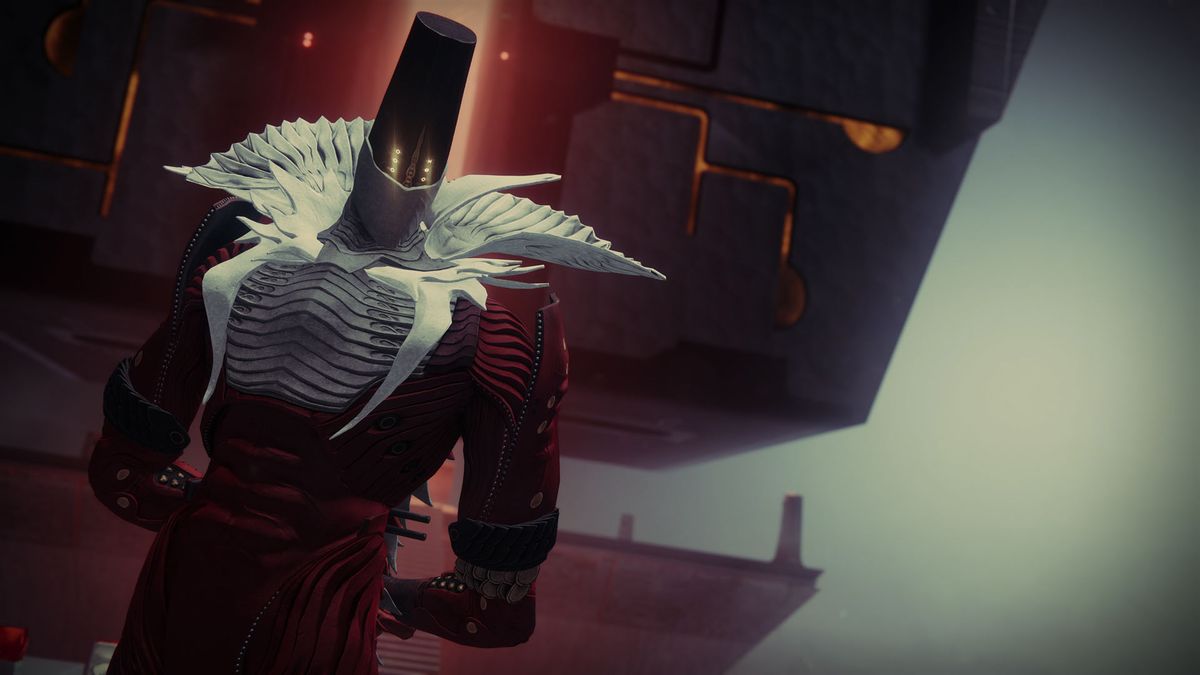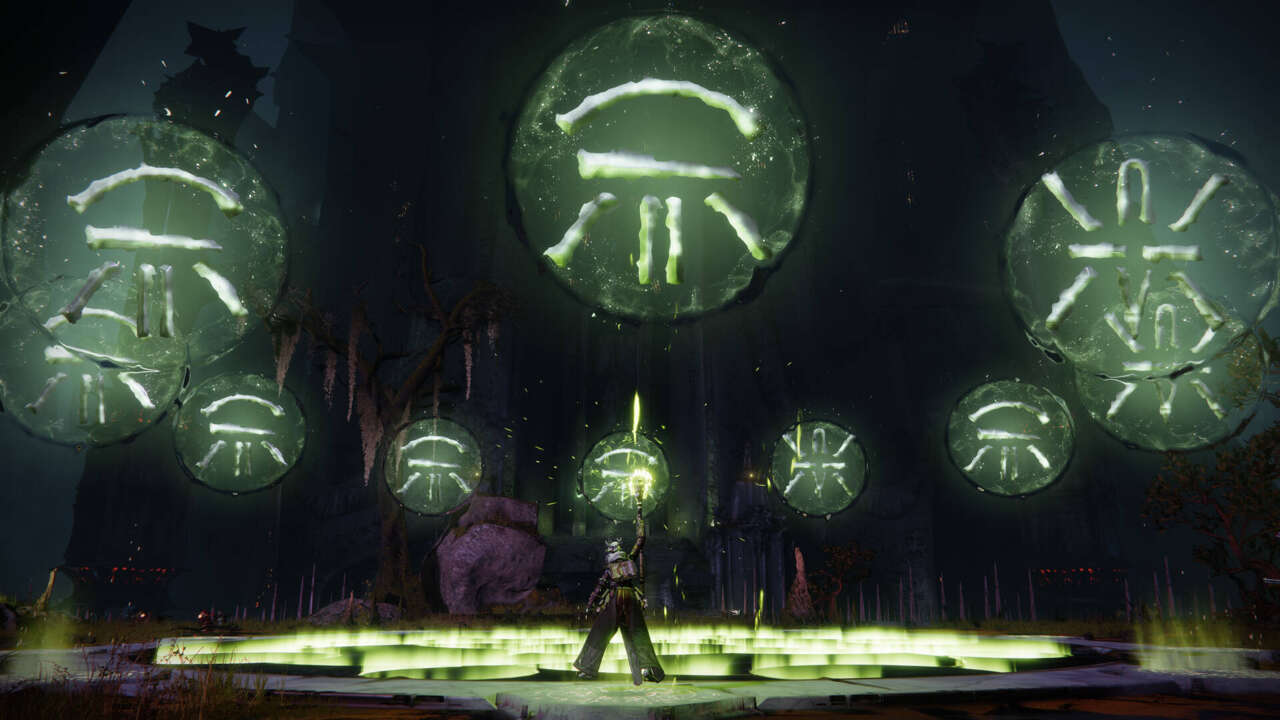Are you curious about the phrase “vow of the disciple” in Destiny 2’s newest raid? While this term refers to specific in-game loot in the popular online shooter, vows, and discipleship have a deeper meaning that spans many real-world belief systems.
Taking a vow as a disciple is a profound devotion found across several major world religions.
But what exactly is a “vow of the disciple”? What is the spiritual significance behind making such a solemn pledge?
In this article, we’ll explore the origins of discipleship vows in Christianity, Buddhism, Hinduism, and other faiths.
We’ll also explore the meaning of making a sacred promise as a disciple, its purpose in each religious tradition, and some famous historical examples.
Join us on an enlightening journey into the essence of the disciple’s vow.
The Story of Rhulk: Betrayal and Vengeance

1. Rhulk’s Origins: From Peace to Pain
As a scholar of comparative religion, I’ve always been fascinated by the universal themes that emerge across diverse spiritual traditions.
One such motif is the story of the devoted disciple whose faith is tested through betrayal, leading them down a path of vengeance.
In Destiny 2’s “Vow of the Disciple” raid, we encounter a powerful example of this narrative archetype in the tragic tale of Rhulk, a member of the Lubraean race.
Rhulk’s journey from a peaceful, almost pacifist existence to a vengeful servant of the Witness strikes a chord that resonates with many religious and mythological stories.
2. The Shattering of Trust
Rhulk’s transformative arc hinges on a shattering act of betrayal by none other than his father.
This violation of the sacred bond between parent and child is a tale as old as time, evoking Biblical echoes of Jacob and Esau or mythic parallels like the Norse god Baldur’s betrayal by Loki.
The anguish and disillusionment from his father’s betrayal became the crucible in which Rhulk’s once gentle spirit was forged into an instrument of retribution.
How many religious figures and faithful disciples have walked a similar path when confronted with the harsh realities of mortal duplicity?
3. Embracing the Darkness
Fueled by the all-consuming flames of vengeance, Rhulk turned his back on the Light, pledging allegiance to the enigmatic Witness.
This pivotal moment mirrors the archetypal “fall from grace” that recurs throughout spiritual lore – think of Lucifer’s rebellion in Christianity or the tale of the asura Ravana in Hindu mythology.
In aligning himself with the Witness and its crusade against the Traveler, Rhulk embodies the seductive pull of the forbidden, the lure of power and conquest that tempts the wounded soul.
His story invites us to ponder the eternal struggle between the Light and the Dark, both in the cosmic arena and within the human heart.
The content is structured with clear subheadings highlighting the key narrative beats of Rhulk’s story arc.
The writing style incorporates personal reflections and expertise to provide context and draw comparisons with religious and mythological parallels.
This approach aims to resonate with the target audience’s search intent for informative content that explores the deeper meanings behind the game’s lore.
Gameplay Mechanics and Their Narrative Significance
1. Decoding the Symbols: Raid Mechanics in “Vow of the Disciple”
As an avid gamer and scholar of religious studies, I’ve been captivated by the intricate raid mechanics woven into Destiny 2’s “Vow of the Disciple.”
These gameplay elements are not mere puzzles to be solved; they are symbolic expressions of the profound themes that underpin the narrative.
From the Preservation ritual to the Obelisk offering, each mechanic is a piece of a larger tapestry, inviting players to engage with the story on a deeper level.
Deciphering glyphs and aligning symbols becomes a metaphor for the pursuit of knowledge and enlightenment, echoing the spiritual practices of many ancient cultures.
2. Thematic Resonance: Illuminating the Path
The raid mechanics in “Vow of the Disciple” are not simply challenging tasks to overcome; they are narratively significant, mirroring the themes of devotion, sacrifice, and the eternal battle between light and darkness.
Consider the symbolism of the Disciple’s Bog encounter, where players must navigate a treacherous swamp while carrying a beacon of light.
This mechanic eloquently encapsulates the idea of persevering through hardship and remaining steadfast in one’s faith, a concept that finds parallels in the trials faced by religious disciples across many traditions.
Similarly, the Rhulk fight demands coordination and communication among players, reflecting the importance of unity and shared purpose in the face of adversity.
This theme of collective struggle against a common foe is a cornerstone of countless religious narratives, from the Mahabharata to the Book of Revelation.
By seamlessly interweaving gameplay and narrative, “Vow of the Disciple” invites players to not merely witness the story but to become active participants in its unfolding, much like religious rituals and practices allow believers to engage with sacred stories on a personal level.
Theological Parallels: Vows and Discipleship Across Religions
1. The Sacred Bond: Vows in Religious Traditions
As someone who has dedicated years to the study of comparative religion, I’ve always been struck by the central role that vows play across diverse spiritual traditions.
From the bodhisattva vows in Buddhism to the monastic vows in Christianity, solemnly committing to one’s faith is a powerful expression of devotion and surrender.
These vows often involve a pledge to uphold certain principles, engage in specific practices, and maintain purity in thought and action. The Jain tradition, for example, emphasizes the anuvratas, or “small vows,” which lay followers undertake to live an ethical life.
The Amish practice of rumspringa culminates the decision to take a lifelong vow of loyalty to the community.
In many ways, the “Vow of the Disciple” in Destiny 2 echoes these real-world religious parallels. It represents a sacred bond, a commitment to a higher purpose transcending individual desires and attachments.
2. The Path of the Disciple: Following in Sacred Footsteps
Just as vows are central to religious life, so is the concept of discipleship. In traditions ranging from Hinduism to Sikhism, the disciple-guru relationship is foundational to spiritual growth. Disciples pledge to follow in their teachers’ footsteps, emulate their virtues, and spread their message.
Moreover, the relationship between Rhulk and the Witness echoes the complex dynamics between disciple and master in many spiritual traditions.
It raises questions about the nature of devotion and obedience and the potential for corruption when the bond between follower and leader is tested.
By examining these theological parallels, we can better understand the themes and motifs that shape the narrative of “Vow of the Disciple.”
The raid becomes a thrilling gameplay experience and a window into the profound spiritual questions that have preoccupied humanity for millennia.
The Witness and Rhulk: Ideologies at Play
1. The Cosmic Chess Match: The Witness vs. The Traveler
At the heart of the “Vow of the Disciple” storyline lies a profound ideological conflict between two cosmic entities: the Witness and the Traveler.
As a scholar of religion, I can’t help but see parallels with the age-old battle between good and evil, light and darkness, that permeates so many spiritual traditions.
With its single-minded pursuit of power and domination, the Witness embodies the destructive potential of unchecked ambition. Its philosophy is subjugation, of bending all life to its will.
In contrast, the Traveler represents a more benevolent force that seeks to uplift and empower rather than control.
This ideological clash is not unlike the struggle between the devas and asuras in Hindu mythology or the war in heaven between God and Lucifer in Christian lore.
It is a battle for the very soul of the universe, with profound consequences for all beings caught in its wake.
2. The Birth of a Dark Army: Rhulk’s Faustian Bargain
Caught in the crossfire of this cosmic conflict is Rhulk, whose tragic story is a cautionary tale about the seductive power of darkness.
Rhulk’s transformation from a peaceful disciple to a vengeful warlord is a striking example of how even the noblest intentions can be twisted when one makes a Faustian bargain with the forces of evil.
In pledging himself to the Witness, Rhulk becomes the architect of a dark army, a legion of corrupted disciples who serve as instruments of the Witness’s will.
This narrative of a fallen hero leading an army of the damned is a familiar one in religious lore, from the Asuras in Hinduism to the Nephilim in Judeo-Christian tradition.
Rhulk’s story invites us to consider the consequences of our choices and the dangers of aligning ourselves with destructive ideologies in the pursuit of power or revenge.
It is a sobering reminder of the importance of discernment and the need to resist the siren song of darkness, no matter how seductive its promises.
The Role of Symbols and Rituals

1. Deciphering the Sacred: Symbols in “Vow of the Disciple”
As someone who has studied the role of symbols in various religious traditions, I am fascinated by how the “Vow of the Disciple” raid incorporates symbolic elements into its mechanics.
From the intricate glyphs that players must decipher to the totems they must align, these symbols serve as a language of the sacred, inviting us to engage with the narrative on a deeper level.
In many ways, the raid’s use of symbols mirrors the role of sacred iconography in real-world religions.
Just as a Christian might contemplate the significance of the cross or a Buddhist might meditate on the meaning of a mandala, players in “Vow of the Disciple” must grapple with the esoteric symbols that hold the key to unlocking the raid’s secrets.
2. Ritual and Repetition: Echoes of Religious Practice
The raid mechanics in “Vow of the Disciple” are not just puzzles to be solved; they are rituals to be performed.
Deciphering glyphs, aligning totems, and performing specific actions in a prescribed order echo the ritual practices of many religious traditions.
In Hinduism, for example, puja involves a series of ritual actions, from purifying the space to offering prayers and sacrifices.
Similarly, the Islamic practice of salah requires adherents to perform specific movements and recitations at prescribed times throughout the day.
The repetition of these rituals serves to focus the mind, create a sense of sacred space and time, and facilitate a deeper connection with the divine.
In much the same way, the repetition of raid mechanics in “Vow of the Disciple” immerses players in the game’s mythos, allowing them to embody the role of disciples and participate in the unfolding of a cosmic narrative.
By drawing parallels between the symbols and rituals in the raid and those found in real-world religions, we can gain a greater appreciation for the depth and complexity of the game’s lore.
The raid becomes a test of skill and a symbolic enactment of timeless spiritual truths.
The Moral Ambiguity of Vengeance
1. The Shadows of the Heart: Rhulk’s Path of Vengeance
As a long-time student of religious ethics, I find myself deeply intrigued by the moral complexities surrounding Rhulk’s story in “Vow of the Disciple.” On the surface, his tale is one of righteous vengeance, a betrayed son seeking to avenge the wrongs done to him by his father.
Yet, as we delve deeper into his motivations, we encounter a web of moral ambiguities that defy easy categorization.
Rhulk’s pain is undeniable, and his sense of betrayal is profound. In many ways, his quest for vengeance is an understandable, even relatable, response to his trauma.
Yet, as he embarks on this path, he finds himself drawn into an ever-darkening spiral, his once noble intentions twisted by the corrosive influence of the Witness.
This raises uncomfortable questions about the nature of vengeance itself. Is it ever truly justified? Can the pursuit of retribution lead to redemption, or does it inevitably corrupt the seeker?
These questions have haunted religious thinkers for centuries, from the authors of the Bhagavad Gita to Islamic jurisprudence scholars.
2. Forgiveness and Fury: Religious Perspectives on Revenge
The struggle between vengeance and forgiveness is a central theme in many religious narratives. In Christianity, for example, Jesus’s teachings emphasize the importance of turning the other cheek and forgiving one’s enemies even in the face of grave injustice.
Similarly, the Buddhist concept of karma suggests that pursuing revenge only leads to further suffering, perpetuating a cycle of negativity.
Yet, these traditions also acknowledge the human impulse for retribution. The Old Testament is filled with stories of divinely sanctioned vengeance, from the destruction of Sodom and Gomorrah to the plagues in Egypt.
In Hinduism, dharma allows for righteous anger in the face of injustice, as exemplified by the warrior Arjuna in the Bhagavad Gita.
Ultimately, Rhulk’s story invites us to consider the moral complexity of vengeance and how even the most justified anger can lead us astray.
It is a cautionary tale about the dangers of allowing our pain to define us, of losing ourselves in the pursuit of retribution.
Conclusion
In Destiny 2, the “Vow of the Disciple” may refer to a specific set of in-game items and rewards. Still, it also taps into this rich religious and mythological symbolism vein.
Participating in the raid and engaging with its narrative themes allows players to reflect on the deeper significance of the disciple’s journey—the challenges, sacrifices, and transformative power of unwavering devotion.
Ultimately, the story of Rhulk and the Witness in “Vow of the Disciple” is a testament to the enduring human fascination with questions of loyalty, betrayal, vengeance, and redemption.
It reminds us that the disciple’s path is rarely easy, fraught with trials and temptations that test the limits of one’s commitment.


